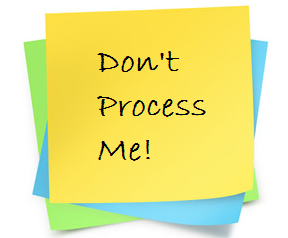I know I can't build my business alone. Yet how many of us feel alone, especially when we're bootstrapping a startup and the waters are rising. We can't afford the help we need, and somehow the help we can afford just doesn't seem to bridge the gap. Getting help is often more effort than trying to slog through without it. When help is heavy, is it help at all?
Well, maybe. But often, it really isn't.
Why is help so heavy? Because it's so expensive to give.
What are some common forms of help?
- Resources - help with money, tangible assets, service, support
- Activity - help with getting something done
- Connection/Referral - help making a connection that can possibly provide resources, activity or further connection
- Advice - help with understanding, clarifying and deciding
Why are these forms of help so expensive for a Helper to give? And, more importantly, why are they so expensive for a Receiver to receive?
So, let's look at Resources.
Resources are expensive to give because resources are already in use. Giving resources requires at least a short-term loss, and increased risk of an unbalanced exchange over time. Unless giving them generates immediate value back to the Giver, it's hard to shake them loose from an organization or a life. Decision-makers must trade-off their social capital and budget items to make space, and even if they want to, they may not be allowed.
So, it's unlikely you'll be offered much help in the form of resources, even if you're offering a longer-term pay-back. But don't worry:
You may not want those resources anyway.
Why not?
Start with Money
Money is the vehicle of economic value, and so it is the most flexible, and therefore most guarded, resource. Under these circumstances, money comes with lots of strings. That is, contracts. Legally binding requirements that the money be used a certain way, recoverable a certain way, provide a certain benefit. Socially binding requirements that allow the money-givers to interfere with and influence how you do your work. Bureaucratically-binding requirements for report-back, feedback integration, tracking systems and process certifications. Overhead that sometimes makes you wonder - how much is this help costing me?
Of course, that's after they decide to give you money. Before that, you must beg in many time-consuming ways including (but not limited to) networking activities, creation of sponsorship packages, engaging onerous application processes, giving presentations, participating in contests and panel-judged competitions, and all manner of distraction from your business. Money is definitely the most expensive resource to receive.
Okay, Money's expensive. But what about Tangible Assets - like space, equipment, or help with support and services?
Tangible Assets
Tangible assets, like space and equipment, are hard to give unless there is excess, and few people or organizations carry excess for long. Every square foot has a price between $2 and $$$$, and eventually, someone must account for its use. When a financial analyst changes space into money, it runs into the same difficulties as money.
From a business perspective, we can't build our foundations on shaky ground.
Available space is particularly enticing - a space to do our work feels essential. Yet, if the space is temporary, it might prevent us from looking for a real home where we can settle in and get the work done. Moving has tremendous overhead. If our tenancy is precarious, we might find ourselves homeless at a particularly inconvenient time, moving our network and furniture when we want to be driving our product and marketing efforts. Space also co-locates, which can be very beneficial. It can also mean that you get distracted from your own business. These aren't reasons not to use space, just reasons why it's costly. The cost-benefit analysis is yours to make.
Equipment may be useful, and being hand-me-down, may not. We take our chances on how big an expense used equipment might be in the long run for maintenance, support and timing of obsolescence.
So, Tangible Assets come with overhead. But what about real help - like help with support and services?
Services and support are overhead costs to an organization - they don't change with the cost of the product or the sales. They are sometimes easier to get, because to the leader responsible, they are "free." But overhead is always closely watched, and every support person in an organization is generally overtaxed. and support staff can become over-burdened by "helping" you.
No one is sitting around, waiting to have you add to their workload. Anything else will be their priority - anything for their real boss will take precedence. The service may be slower, less helpful, or difficult to access, and you may feel like you need to minimize your requests and not get what you really need. Most places already fight for "headcount" just to get the work of the organization done. It quickly becomes a burden unless you begin to pay, and if you are paying, there are probably more straight-forward ways to get better service for the same money.
I'm not saying help can't be helpful.
I'm just saying, help can be expensive to receive.
We want to carefully assess the cost-benefit of Help, as we do with our other business decisions, before thinking "help" is the only way we can get done what we need to do. Sometimes, it's more effective and efficient to just do it ourselves. Getting creative about what "help" can look like, being easy to help, and engaging help more lightly are all topics we can talk more about. Get in touch!
I will look at the expense of giving and receiving Activity, Connection/Referral and Advice in further posts.
*"Contracts": Agreements translated into an unintelligible form of language by experts who only talk with each other and report back simplified translations to the people who are making the agreements, which they seal with a pen-scrawl of their name, often without ever looking each other in the eye.
